Set on the banks of the Irrawaddy River, Mandalay is Myanmar’s second-largest city. The combination of crumbling colonial charm, elegant Buddhist temples, and lush hilly surrounds have rendered many a traveller hopelessly intoxicated. Visiting here is like stepping back 50 years in time: beat-up buses trundle along wide avenues, men in longyis cycle serenely around the moat, and monks pad silently through dusty temple courtyards. Don’t miss a trip up Mandalay Hill to take in panoramic city views; sunset at Ubein Bridge (the longest teakwood bridge in the world); the Buddhist Mecca of Sagaing, encompassing scores of temples and the Buddhist University; and a mellow boat trip down the Irrawaddy River to see the colossal stupa base at Mingun.
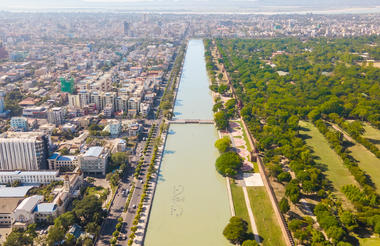
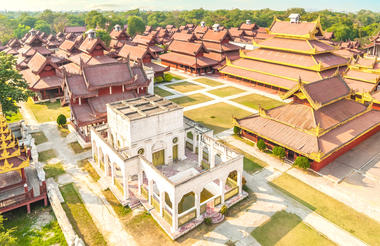
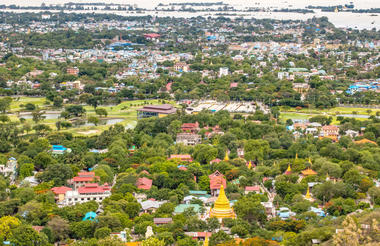
The Ayeyarwady River, also known as the Irrawaddy River, is Myanmar’s major waterway, both in size and commercial significance, running from North to South through the length of the country. The river sustains two endangered indigenous creatures - the freshwater Irrawaddy dolphin and the river shark, as well as a host of fish and bird species. It’s possible to do lovely boat cruises between certain points on the river, such as a day cruise between Mandalay and the ancient city of Mingun - home to a massive pagoda base that, had it been finished, would be the largest of its kind in the world - as well as longer cruises between the major centres along its banks, which include Mandalay, Bagan and the country’s capital, Yangon. Forays along the Ayeyarwady’s tributaries take in many remote villages and views that would be difficult to experience otherwise.



As previously described



The relaxed town of New Bagan lies on the eastern banks of the grand Irrawaddy River. Located in an area rich in history and culture, it is home to many charming temples, including the intricately carved Nanpaya Temple; the Burmese style Shwesandaw Pagoda; the majestic Buddhist temple of Lawkananda Pagoda; and the towering Dhammayangyi Temple, famed for being the largest in Bagan. Nature lovers can spend their days amidst the lush trees of the beautiful Lawka Nandar Park, a nature park resting on the banks of the river which houses the Lawkananda Wildlife Sanctuary. Travellers to this pleasant town can meander through a network of tranquil roads, interact with the friendly locals, or shop for souvenirs at the bustling morning market.



Situated high up in the western Shan State, Kalaw is a former hill station founded by British civil servants. It is something of a high-altitude resort – cool, calm, and leafy – but is also widely known as a trekking Mecca in Myanmar, as those wishing to explore the surroundings can do so without prior permission. Its population is diverse, as Nepali Gurkhas, Indian Hindus, Sikhs, and Muslims came here to build the roads and railway line during the British period. A wide variety of exploring options are available, including three-day treks to Inle Lake or Pindaya. At the town’s heart is an exciting market, where villagers from the wider area come to sell their produce and an eclectic range of foods. Make sure to visit the atmospheric Aung Chang stupa, or take a taxi ride to the captivating Green Hill Valley elephant camp.



Resting in the Shan Hills’ Nyaungshwe Township, beautiful Inle Lake is a world unto itself and one of Myanmar’s most alluring destinations. The local people have integrated their lives fully with their watery surrounds, building entire villages on stilts, buoying up their crop fields with floating devices, and even learning an ingenious method of fishing from their long-tail boats – balancing on one leg and using the other to clasp the paddle and row, which leaves their hands free to cast a net. Here visitors can enjoy delicious Myanmar cuisine and exquisite sunsets from alfresco decks, or take a boat trip to the floating markets and the handicrafts centres, watch silver makers, silk-weavers, and lacquer artists at work, and purchase exquisitely made gifts and souvenirs.
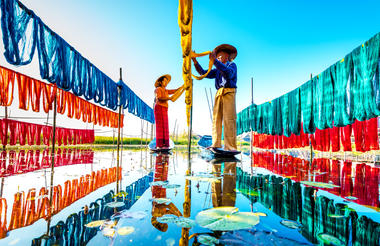
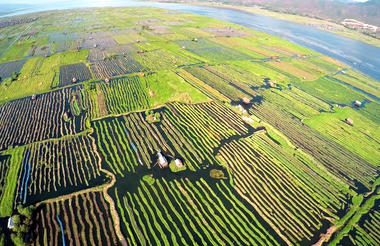
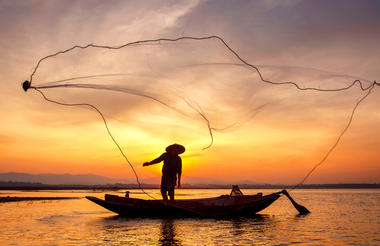
Situated in Myanmar's Rakhine State on the Bay of Bengal, Ngapali Beach is the country's number one beach destination. However, it has managed to retain its traditional culture and old-world charm, with its quaint fishing villages, ox-drawn carts providing the local taxi service, and little nightlife to speak of. If its rest and relaxation you’re looking for, this is the place to be – the typical order of the day involves kicking back on palm-lined sand beaches, swimming in the temperate, crystal clear bays, taking mellow boat cruises and snorkelling expeditions, and dining at the seafood restaurants dotted along the beachfront.



With a population of over 5 million, Yangon, also known as Rangoon, was the capital of Myanmar up until the end of 2005. It remains the largest city, and is still the pivotal commercial hub of the country today. A visit to this magnificent city will allow you to take in the interesting mix of British, Burmese, Chinese and Indian cultures that mingle there. The skyline is an interesting contrast of decaying colonial architecture and modern high-rises, dominated by the golden glow of the Shwedagon Pagoda, an exquisite Buddhist temple that draws pilgrims from across the globe. Your time here would be well spent visiting the impressive array of temples, museums, and markets that the city has to offer.








